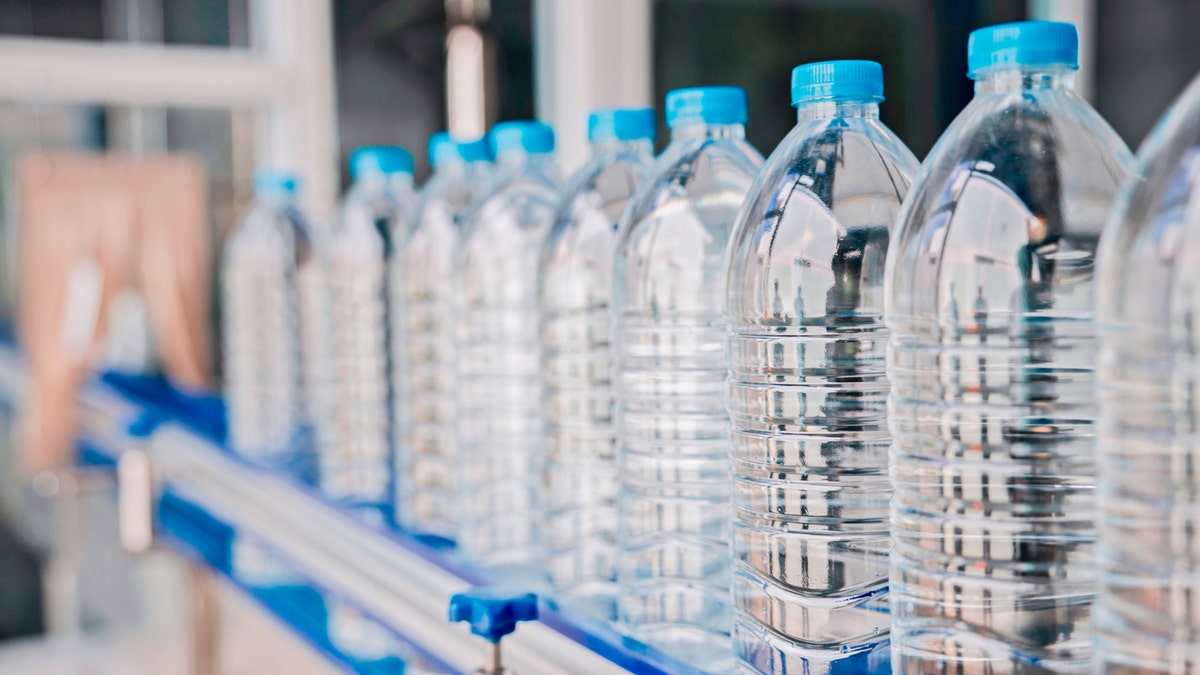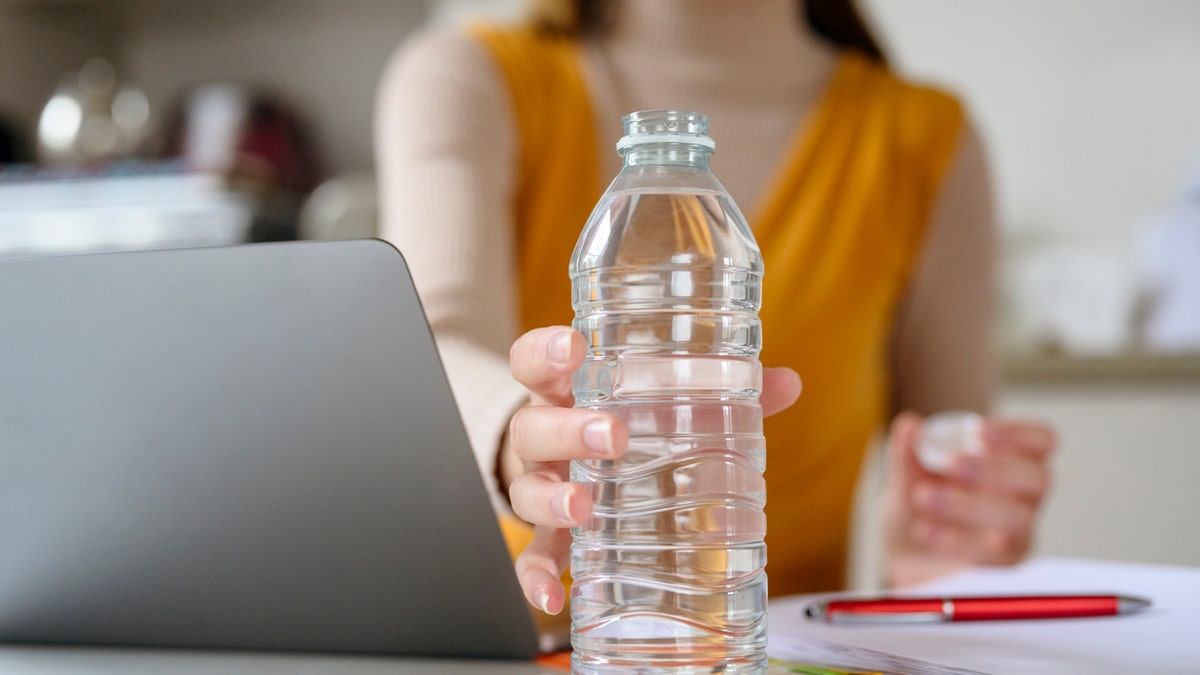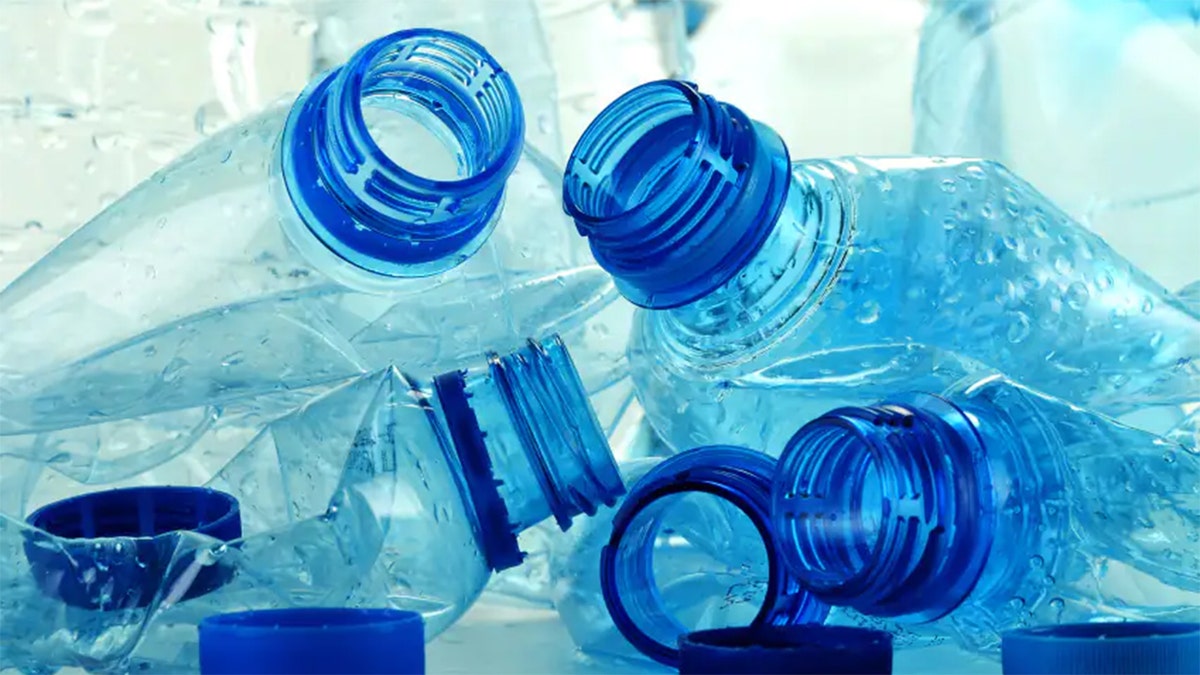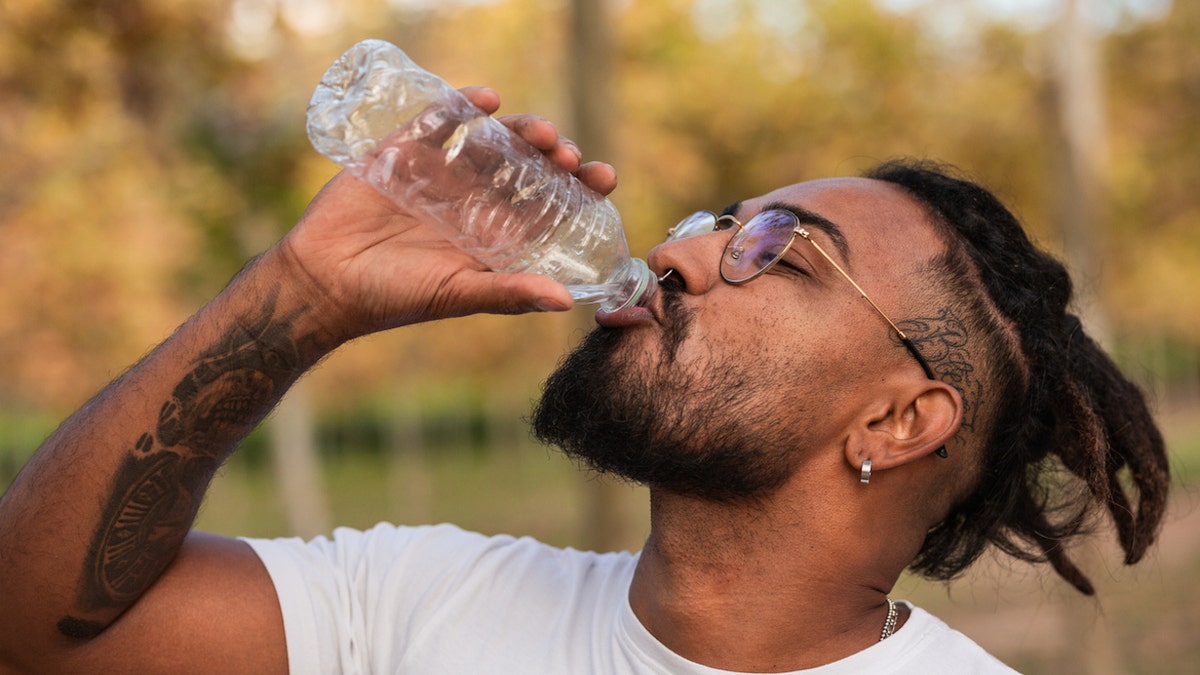People who drink bottled water may be getting more than just hydration, some researchers claim.
A new study published in the journal Proceedings of the National Academy of Sciences found that each bottle of water can contain hundreds of thousands of nanoplastics, which are tiny particles of plastic below 1 micrometer, measured in billionths of a meter.
Researchers from Columbia University Lamont-Doherty Earth Observatory, Columbia University, and Columbia Mailman School of Public Health in New York found that each liter of water contained around 240,000 of these plastic fragments, much higher than previously thought.
NEW YEAR’S EVE BEVERAGE COULD GO EXTINCT DUE TO CLIMATE CHANGE, AI COMPANY PREDICTS
Because nanoplastics are so tiny, the concern is that they could make their way into people’s bloodstreams and organs and potentially enter individual cells, the researchers cautioned in a press release from the university.
The potential health effects are still unknown.
While previous studies provided broad estimates of nanoplastic amounts, this is the first study to identify the specific number of individual particles, the researchers noted.
They used a novel technique called stimulated Raman scattering microscopy, in which lasers stimulate the molecules of common plastics.
REUSABLE WATER BOTTLES CONTAIN MORE BACTERIA THAN TOILET SEATS DO, SAYS STUDY
“We developed a powerful optical SRS imaging technique for rapid analysis of nanoplastics with unprecedented sensitivity and specificity,” study co-author Beizhan Yan, an environmental chemist at Columbia University’s Lamont-Doherty Earth Observatory, told Fox News Digital.
“Previously, this was just a dark area, uncharted. Toxicity studies were just guessing what’s in there,” he added in the press release. “This opens a window where we can look into a world that was not exposed to us before.”
Three popular types of bottled water were analyzed in the study, but the researchers did not specify the brands.

“We found approximately one quarter of a million tiny plastic particles in one liter of water, 90% of which are nanoplastics,” Yan said.
“This number is about 10 to 100 times higher than previously estimated.”
Out of the seven types of plastic identified, the most prevalent was polyamide, a type of nylon.
Another was polyethylene terephthalate (PET), which is the material used to make the water bottles themselves.
LEMON WATER HAS ITS HEALTH BENEFITS, BUT SHOULD YOU DRINK IT DAILY? EXPERTS WEIGH IN
Other detected plastics included polystyrene, polyvinyl chloride and polymethyl methacrylate.
In future studies, Yan said he hopes to use a laser with higher power to increase the sensitivity and plans to identify additional types of plastic beyond these initial seven.
“Media reports about these particles in drinking water do nothing more than unnecessarily scare consumers.”
Celeste Meiffren-Swango, the Zero Waste program director at Environment America in Colorado, who was not involved in the study, told Fox News Digital that she believes “we have a public crisis on our hands — in our bodies and our water.”
She went on, “This new nanoplastics study reinforces that plastics have infiltrated just about everywhere. The proof is indisputable: For the sake of human and wildlife health, it’s time for our society to move beyond plastics.”

The Northeast Bottled Water Association (NEBWA) was not a participant in the research, but also reacted to the study findings in a statement to Fox News Digital.
“This new study by Columbia University … used bottled water to apparently demonstrate a new method for nanoplastics analysis due to a lack of currently available methods,” said a statement from Jason Hutzley, executive director of NEBWA.
THESE ARE THE WORST DRINKS FOR YOUR HEALTH, ACCORDING TO NUTRITIONISTS
“This new method needs to be fully reviewed by the scientific community and more research needs to be done to develop standardized methods for measuring and quantifying nanoplastics in our environment.”
NEBWA noted that there is “a lack of standardized methods and no scientific consensus on the potential health impacts of nanoplastic and microplastic particles. Therefore, media reports about these particles in drinking water do nothing more than unnecessarily scare consumers.”

The association’s statement also pointed out that microplastics and nanoplastics are found in thousands of food and beverage products packaged in plastic containers, not just water bottles.
“Moreover, and perhaps even more important, nanoplastic and microplastic particles are found in all aspects of our environment — soil, air and water,” the statement added.
When contacted for comment, the U.S. Food and Drug Administration (FDA), which is not involved with the Columbia study, said it is aware of the studies that have been conducted on microplastics in the food supply.
“While there is evidence that microplastics and nanoplastics are entering the food supply … there is a lack of evidence demonstrating that microplastics or nanoplastics occurrence in food poses a risk to human health.”
“This is an area where the FDA has not only been monitoring the research but also working to advance the science through analysis of testing methodologies and other related work, including participation in the United States Government Nanoplastic Community of Interest,” an FDA spokesperson told Fox News Digital.
CLICK HERE TO SIGN UP FOR OUR HEALTH NEWSLETTER
“There have been fewer studies on nanoplastics because there are not as many reliable methods to measure them,” the agency continued.
“This and other significant research gaps exist, but the FDA is not aware of scientific evidence that would support consumers being concerned about the potential level of microplastic or nanoplastic contamination in food, including bottled water.”

“While there is evidence that microplastics and nanoplastics are entering the food supply, primarily from environmental contamination, there is a lack of evidence demonstrating that microplastics or nanoplastics occurrence in food poses a risk to human health.”
Bottled water processors must comply with “robust regulations,” the FDA noted.
Study author Yan acknowledged that further research is necessary to determine whether drinking bottled water containing nanoplastics could lead to adverse health effects.
“If people are concerned about nanoplastics in bottled water, it’s reasonable to consider alternatives like tap water and reusable bottles,” the researcher said.
“However, it’s important to emphasize that staying hydrated is crucial for health,” he added.
“Therefore, we do not advise against drinking bottled water when necessary, as the risk of dehydration may outweigh the potential impacts of nanoplastics exposure.”
For more Health articles, visit www.foxnews.com/health.
Read the full article here